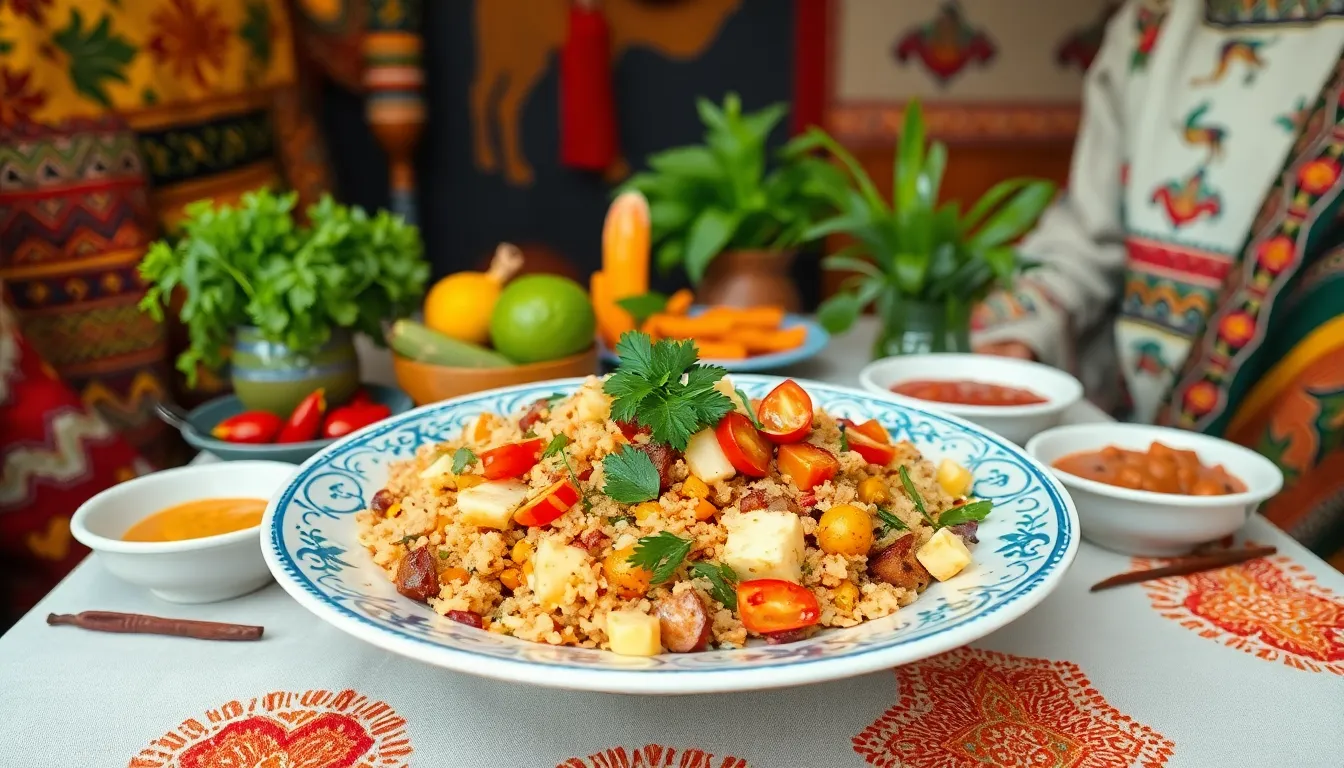In the vibrant world of culinary delights, falotani stands out like a peacock at a pigeon convention. This unique dish, often overshadowed by more mainstream options, packs a punch of flavor that’ll have taste buds dancing and foodies clamoring for more. If you think you know everything about global cuisine, think again—falotani is here to challenge your palate and elevate your dining experience.
Falotani
Falotani represents a unique dish celebrated for its rich flavors and intricate preparation methods. Originating from specific cultural traditions, this dish combines various ingredients to create a remarkable dining experience. Emphasis lies on the balance of spices that bring depth to its taste, making falotani an exciting option for culinary exploration.
Typically, falotani includes a mix of grains, legumes, and vegetables, harmoniously blending textures and tastes. Each component contributes to the overall profile of the dish, ensuring a satisfying palate. Chefs often adapt recipes to highlight local ingredients, showcasing the versatility of falotani across regions.
Diners frequently appreciate falotani for its hearty nature, offering both nourishment and flavor. Seasonal variations allow for creativity, encouraging the use of fresh produce and herbs. Enthusiasts find joy in discovering different interpretations that reflect the culture’s culinary heritage.
Traditionally, falotani serves as a communal dish, promoting sharing among diners. The experience of enjoying falotani often transcends simply eating, creating connections between people and fostering conversations. Celebrations and gatherings frequently feature this dish, reinforcing its role in community bonding.
Falotani embodies a delightful fusion of flavors, culture, and tradition. This dish not only satisfies hunger but also sparks curiosity about the culinary arts, inviting food lovers to delve deeper into its flavorful world.
History of Falotani

Falotani features a rich history deeply rooted in diverse culinary traditions. Its unique preparation and flavors reflect the cultures from which it originates.
Origins
Falotani traces its beginnings to ancient communities known for their agricultural practices. Cultivators relied on staple ingredients, including grains, legumes, and spices, leading to its distinctive recipe. Regions such as the Mediterranean and parts of Africa showcase variations that adapt local ingredients while preserving essential preparation methods. Preservation of traditional techniques through generations maintains falotani’s authentic character. Availability of seasonal produce influences recipe adjustments, enhancing the dish’s adaptability in various kitchens.
Cultural Significance
Cultural significance of falotani extends beyond mere sustenance; it embodies community and connection. Shared during communal gatherings, it fosters relationships among diners, emphasizing a sense of belonging. Additionally, celebrations often spotlight falotani, enriching the dining experience during festivities. Food enthusiasts recognize its role in showcasing local culinary heritage, reinforcing cultural identity. Many communities celebrate regional versions, ensuring continuous evolution while honoring ancestral practices. Thus, falotani serves as a bridge, linking generations through its vibrant flavors and shared experiences.
How to Prepare Falotani
Preparing falotani requires a thoughtful selection of ingredients and precise techniques to bring its rich flavors to life.
Ingredients Needed
Key components include a variety of grains such as rice or bulgur. Legumes like chickpeas or lentils contribute protein and texture. Fresh vegetables, such as bell peppers or carrots, add color and nutrition. Spices like cumin, coriander, and paprika enhance the flavor profile. Fresh herbs, including parsley or cilantro, provide an aromatic finish. Optional additions might include meats, nuts, or dried fruits for extra richness.
Step-by-Step Instructions
Start by rinsing the grains well under cold water until the water runs clear. Cook the grains according to package instructions, adjusting the water if necessary. While the grains cook, heat oil in a pan over medium heat. Sauté chopped vegetables until tender, then stir in spices, allowing their aromas to develop. Add cooked legumes to the vegetable mixture, combining all ingredients evenly. Fold in cooked grains and fresh herbs, mixing gently. Serve the falotani warm, garnished with additional herbs or a drizzle of olive oil for added flavor. Sharing the dish enhances the experience and brings diners together.
Popular Variations of Falotani
Falotani exhibits a variety of popular regional adaptations that reflect local ingredients and culinary traditions. Mediterranean versions often include olive oil, tomatoes, and fresh herbs, enhancing the dish’s aromatic quality. African interpretations frequently feature root vegetables and spices like harissa, introducing a robust flavor profile.
In the Middle East, falotani might incorporate sumac and pomegranate seeds, adding a tangy zest and visual appeal. Urban variations adapt traditional recipes to accommodate modern tastes, sometimes substituting quinoa for grains. Local chefs experiment creatively, integrating seasonal produce to enhance freshness and flavor.
Many home cooks cherish family recipes, passing them down through generations, which preserves unique cooking techniques and ingredient preferences. Community gatherings showcase diverse falotani options, such as vegetarian or meat-based, satisfying a range of dietary preferences. Festivals and celebrations often serve as perfect occasions for enjoying communal dishes, where diners share different variations of falotani.
Culinary competitions highlight falotani’s adaptability, inviting chefs to innovate while honoring classic techniques. Understanding the history and significance of each variation enriches the eating experience, fostering appreciation within diverse cultural contexts. By celebrating these variations, falotani connects individuals and communities, inviting them to explore its rich tapestry of flavors.
Embracing Falotani
Falotani stands out as a culinary gem that invites exploration and appreciation. Its rich history and diverse regional adaptations highlight the dish’s ability to connect cultures and foster community. By embracing local ingredients and traditional methods, falotani continues to evolve while remaining rooted in its heritage.
This flavorful dish not only nourishes the body but also enriches the spirit, encouraging shared experiences among diners. As food enthusiasts seek to broaden their palates, falotani offers a delightful adventure that celebrates the beauty of global cuisine. Embracing falotani means savoring its unique flavors and honoring the traditions that have shaped this remarkable dish over generations.


